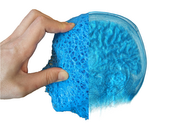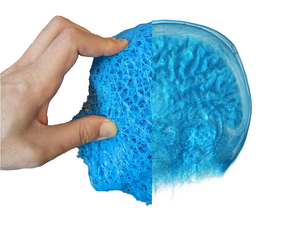Information
- Publication Type: Journal Paper (without talk)
- Workgroup(s)/Project(s):
- Date: December 2024
- DOI: 10.1109/TVCG.2024.3516481
- ISSN: 1941-0506
- Journal: IEEE Transactions on Visualization and Computer Graphics
- Open Access: yes
- Pages: 14
- Publisher: IEEE COMPUTER SOC
- Pages: 1 – 14
- Keywords: Elasticity, Three Dimensional Printing, Pipelines, Fabrication, Microstructures, Rendering Computer Graphics, Encoding, Printing, Data Physicalization, Data Visualization, Digital Fabrication
Abstract
We introduce Squishicalization , a pipeline for generating physicalizations of volumetric data that encode scalar information through their physical characteristics—specifically, by varying their “squishiness” or local elasticity. Data physicalization research is increasingly exploring multisensory information encoding, with a particular focus on enhancing direct interactivity. With Squishicalization , we leverage the tactile dimension of physicalization as a means of direct interactivity. Inspired by conventional volume rendering, we adapt the concept of transfer functions to encode scalar values from volumetric data into local elasticity levels. In this way, volumetric scalar data are transformed into sculptures, where the elasticity represents physical properties such as the material's density distribution within the volume. In our pipeline, scalar values guide the weighted sampling of the scalar field. The sampled data is then processed through Voronoi tessellation to create a sponge-like structure, which can be printed with consumer-grade 3D printers and readily available filament. To validate our pipeline, we conduct a computational and mechanical evaluation, as well as a two-stage perceptual study of the capabilities of our generated squishicalizations. To further investigate potential application scenarios, we interview experts across several domains. Finally, we summarize actionable insights and future avenues for the application of our All supplemental materials are available at
https://osf.io/35gnv/?view_only=605e5085061f40439a98545f0c447cf3 .
Additional Files and Images
Additional images and videos
Additional files
Weblinks
BibTeX
@article{pahr-2024-squishicalization,
title = "Squishicalization: Exploring Elastic Volume Physicalization",
author = "Daniel Pahr and Michal Piovar\v{c}i and Hsiang-Yun Wu and
Renata Raidou",
year = "2024",
abstract = "We introduce Squishicalization , a pipeline for generating
physicalizations of volumetric data that encode scalar
information through their physical
characteristics—specifically, by varying their
“squishiness” or local elasticity. Data physicalization
research is increasingly exploring multisensory information
encoding, with a particular focus on enhancing direct
interactivity. With Squishicalization , we leverage the
tactile dimension of physicalization as a means of direct
interactivity. Inspired by conventional volume rendering, we
adapt the concept of transfer functions to encode scalar
values from volumetric data into local elasticity levels. In
this way, volumetric scalar data are transformed into
sculptures, where the elasticity represents physical
properties such as the material's density distribution
within the volume. In our pipeline, scalar values guide the
weighted sampling of the scalar field. The sampled data is
then processed through Voronoi tessellation to create a
sponge-like structure, which can be printed with
consumer-grade 3D printers and readily available filament.
To validate our pipeline, we conduct a computational and
mechanical evaluation, as well as a two-stage perceptual
study of the capabilities of our generated
squishicalizations. To further investigate potential
application scenarios, we interview experts across several
domains. Finally, we summarize actionable insights and
future avenues for the application of our All supplemental
materials are available at
https://osf.io/35gnv/?view_only=605e5085061f40439a98545f0c447cf3
.",
month = dec,
doi = "10.1109/TVCG.2024.3516481",
issn = "1941-0506",
journal = "IEEE Transactions on Visualization and Computer Graphics",
pages = "14",
publisher = "IEEE COMPUTER SOC",
pages = "1--14",
keywords = "Elasticity, Three Dimensional Printing, Pipelines,
Fabrication, Microstructures, Rendering Computer Graphics,
Encoding, Printing, Data Physicalization, Data
Visualization, Digital Fabrication",
URL = "https://www.cg.tuwien.ac.at/research/publications/2024/pahr-2024-squishicalization/",
}
 teaser:
A hand coming from the left side of the picture squeezes the face of a printed representation of an MRI.
teaser:
A hand coming from the left side of the picture squeezes the face of a printed representation of an MRI.

